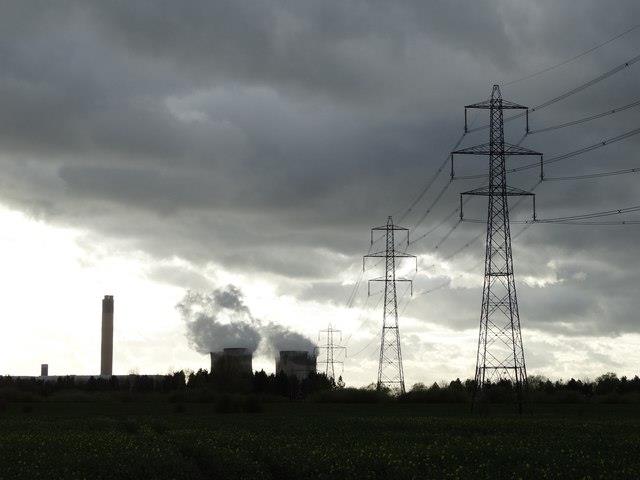Associate Professor Moazzem Hossain, Department of International Business and Asian Studies, was in Paris at the start of July for the International Scientific Conference ‘on ‘Our Common Future under Climate Change’.
The four-day conference was the largest forum for the scientific community to come together ahead of the 21st UNFCCC Conference of the Parties (COP21) in December and addressed key issues around climate change in the broader context of global change.
Dr Hossain, who jointly convened a session on ‘Asia on the Frontlines: Projected Implications, Vulnerability and Adaptation’ during the conference, reflects on its outcomes and implications.
The conference was attended by nearly 2000 delegates from almost 100 countries to highlight the cases of adaptation and mitigation and the sustainable development solutions that are in place address the problems all nation states now face due to emission of carbon dioxide and other gases from using non-renewable energy.
The conference’s main objective was to save the planet from self-destructing before this century ends.
 Keeping global warming under 2°C in order to attain the goals of the IPCC’s 5th Assessment Report (AR5) with respect to adaptation, mitigation and sustainable development solutions was the main focus of this objective.
Keeping global warming under 2°C in order to attain the goals of the IPCC’s 5th Assessment Report (AR5) with respect to adaptation, mitigation and sustainable development solutions was the main focus of this objective.
Up to 600 oral conference papers and 800 posters dealt with both problems and solutions in this regard.
The concluding statement clearly identified the following issues with ‘the solution’ and ‘the problem spaces’ (Outcome Statement, CFCC15 Scientific Committee, chaired by Chris Field, 10 July 2015). Let us mention, first, the issues under the problem space:
The Problem Space
- Warming of the climate system is unequivocal. Human activities are to blame for much of the warming to date;
- Impacts of climate change have affected every continent, from the Equator to the poles and the mountains to the coasts. The many kinds of extremes the climate change has contributed so far are: heat waves, heavy rain, wildfires, droughts, and decreased snow and ice;
- Vulnerability has been exposed due to climate change. Vulnerability is especially daunting where poverty, inequalities, lack of infrastructure, and ineffective governance combine to constrain options;
- Continued high emissions of heat-trapping gases increase the risk of impacts that are severe, pervasive, and irreversible.
The Solution Space
- If greenhouse gas (GHG) emissions are cut by 40-70% below current levels by 2050, warming can be kept below 2°C at reasonable cost by 2100;
- Near-term mitigation will determine long-term warming and risks;
- Investments in adaptation and mitigation can provide a wide-range of co-benefits to the nations;
- Carbon pricing can support the ambitious mitigation goals of the nations;
- Sustainable economic growth of all nations can be assured by effective implementation of the additional investment required to transition to clean energy;
- GHG reduction is easier in some sectors than others.
All the issues mentioned above were presented in several plenary sessions and numerous large and small parallel sessions including the 800 posters displayed at both of the venues.
One of the keynote speakers of the plenary session on July 10 was Professor Joseph E. Stiglitz of the Columbia University and a Nobel laureate in economics. He emphasised three areas related to the solution space: creating ‘green economy’, introducing cross-border carbon taxes and needs creating an environment to find a successful solution in Paris COP21.
The closing plenary session was presented by the Chairman of the IPCC, UNFCCC Climate Negotiations Co-chairs, French Minister for Ecology, Sustainable Development and Energy and French Minister of Foreign Affairs (FM) and International Development. All these top officials will play major parts in COP21 in Paris.
In his concluding remarks the FM emphasised that the nature of the Agreement in COP21 is expected to be based on the Intended Target of Carbon Reduction (INDTCs) orIntended Nationally Determined Contributions (INDCs).
For example, China pledged its carbon reduction in terms of carbon intensity recently in Paris. In other words, China aims to reduce its carbon dioxide emissions per unit of gross domestic product by 60-65% from 2005 levels unlike other countries such as the EU which committed to reduce the overall carbon emission reduction by at least 40% by 2030 from 1990 levels.
In addition, the French Foreign Minister emphasised financing the poor countries to reduce subsidy on fossil fuel, and the need for innovative measures to involve the local authorities, NGOs and civil society to implement the targets of emission reduction to achieve 2 degree Celsius warming by 2100.
In this closing plenary, Scientific Committee Chair Chris Field summed up the conference with the following words: “We are moving to a post-carbon era, where climate change mitigation and adaptation are combined with other goals to build a sustainable future”.
He also noted the deep commitment of scientists to be part of the solution.
This was evident during the four days as the Intergovernmental Panels on Climate Change gathered, compiled and distributed data and outcomes. This was a big job and a big challenge, and they have done a good job. Time pressures limited opportunities to research contributions in smaller, focused groups. This would be a useful exercise where the opportunity is presented or created between now and December.
In any case, it looks again like the world is committed to reaching a binding agreement at COP21 in Paris in December.
